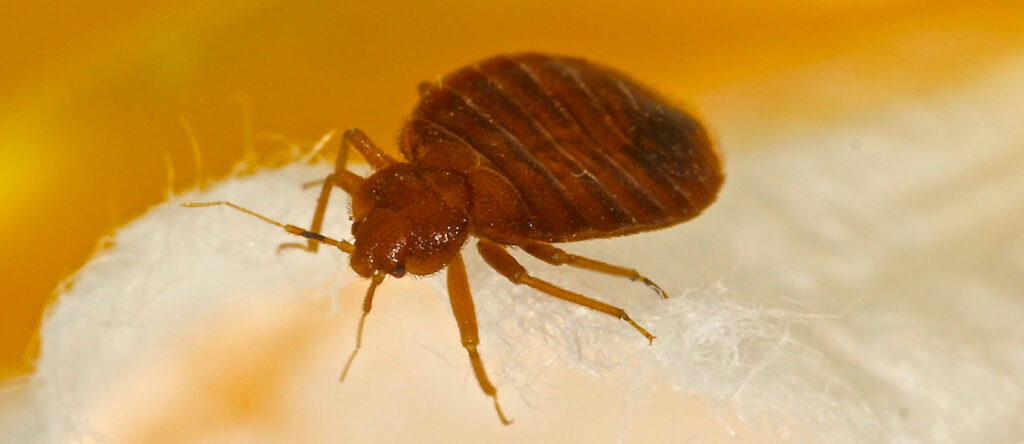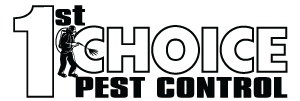Bed Bugs

Ask About Our
100% Eco-Friendly
Options

How to Get Rid of Bed Bugs In Central Wisconsin

Bedbug infestation. It’s a phrase sure to strike fear into the hearts of all. Bed bugs have small, flat, oval-shaped bodies which allows them to easily hide in mattresses, bed frames, bedding, furniture, carpets, and any other small space they can find.
Contrary to popular belief, bed bugs are not too small to be seen with the naked eye. While they can be identified by sight, an infestation is often diagnosed due to the brown and black stains from their excrement on mattresses and linens. Bed bugs multiply extremely quickly, so infestations can easily get out of control and be hard to get under control.
Because of their high proliferation rate, it’s almost always best to leave bed bug control to a professional. At 1st Choice Pest Control our experts can identify bed bugs for you and offer multiple solutions for their removal and control including methods that are 100% chemical free!
We use physical removal, heat treatment, and fungal applications depending on your specific needs and desires. We also apply residual treatments and follow-up directions to help prevent re-infestation. Our experts are specially trained to diagnose and treat bed bug problems, so we will always have a unique treatment plan specific to your
1st Choice Pest Control's Bed Bug Solutions are Ideal For
- Residential Properties
- Apartment Complexes
- Multi-Family Housing
- Hotels and Motels
- Youth Hostels
- Group Homes
- Medical Offices and Clinics
- Temporary Housing and Shelters
- Rental property owners and managers
- University and College Dorms
- Commercial Properties and Businesses Offices
Control Strategies for Bed Bugs
Identification
Adult bed bugs are small, brownish insects, just under a 1/4” long, and are relatively flat. They are nearly as wide as they are long and oval in shape. Immature bed bugs (nymphs) resemble the adults but are much smaller and lighter in color. Newly hatched nymphs are translucent and are no bigger than a pinhead (1 mm). After feeding on a blood meal the immature bed bugs may appear bright red in color. Bed bugs lack wings and therefore they do not fly, but they are capable of moving swiftly on both horizontal and vertical surfaces. The eggs are very small (approximately 1mm), whitish, and very difficult to see on most surfaces without magnification (individual eggs are about the size of a dust speck).
Physical Removal
PBed bugs can be vacuumed from exposed hiding spots such as box spring edges, mattress creases, furniture seams, and carpet edges, but their eggs are stuck tightly to surfaces and are usually hard to remove. Using a crevice tool, or vacuum wand, to scrape the surface can help dislodge some of the eggs. A high-efficiency particulate air (HEPA) filtered vacuum, which removes >99% of all particles >0.3 micron diameter, will ensure that many allergens associated with bed bugs and their debris are also removed. Vacuuming, especially during inspections, will immediately remove a significant portion of the pest population and will usually kill some of the bugs. Bed bugs may also be removed from exposed resting sites by pressing down on them with the sticky side of a commercially available tape, hand-picking them, or brushing them into a container of rubbing alcohol or soapy water.
Heat Treatments
Since the early 1900s, bed bugs have been controlled by heating infested rooms or whole buildings to temperatures of at least 45 °C; the thermal death point for these pests. For heat treatment to be effective, it is critical that high temperature and low relative humidity be attained for a minimum length of time. Heat treatment works best with a combination of temperatures in the 49-52 °C (120-125 °F) range at 20-30% relative humidity for 20-30 minutes. Heat treatment has an immediate and substantial effect but does not provide long-lasting control. Bed bugs can re-occupy any treated site as soon as temperatures return to normal. Always consult with a knowledgeable pest control professional trained to use heat treatments. 1st Choice Pest Control is a state-certified company knowledgeable in bed bug remediation. One area where professional expertise is not required is laundering infested linens or clothes. Occupants can wash these items in hot water with detergent, followed by heat drying for at least 20 minutes in a clothes dryer on high heat, which will kill all stages of bed bugs. This is an effective method, but will not prevent re-infestation of these items. They must be stored in plastic bags or containers after laundering until the problem is under control.
Fungal Application
Bio-pesticide is a non-toxic, ready-to-use oil formula of fungal spores. One application will last three months making it an excellent choice for active and preventative bed-bug treatments. How it works When a bed bug comes into contact with a treated surface, the fungal spores stick to its feet and body and are taken back to its harborage. The spores transfer easily between bed bugs by direct contact, targeting bed bugs that do not leave the harborage. After 24 hours, spores on the bed bug will germinate, like seeds, and penetrate directly through the cuticle of the bed bug. Once inside, the fungal disease grows in the blood system, killing the bed bug within 3-10 days. Kills and controls bed bugs for up to 3 months (perfect for quarterly treatments if needed).
Residual Application
Precise placement of a suitably labeled, registered, and formulated residual chemical insecticide is still a practical bed bug control. Effective insecticide treatments consist of applying interior sprays or dusts to surfaces that bed bugs contact, as well as to cracks and crevices where they rest and hide. Before using any residual insecticides, care must be taken to select the least-toxic active ingredient and formulation. Re-treatment, when needed, should be carried out after the shortest interval permitted by the label until bed bugs are eliminated. The choice of chemical products and specific application techniques can depend on many factors, including the physical location, product label, the immediate environment, the presence of sensitive populations in the building (including children, elderly and health-compromised individuals) and local, state or national laws.
Follow-Up
Make sure to follow up with as many recommended treatments that are required to solve your problem.

Frequently Asked Questions
Signs of a bed bug infestation include small blood stains on sheets or pillowcases, tiny white eggs or eggshells, and dark or rusty spots of bedbug excrement on bedding, mattresses, and walls.
Before treatment, it’s important to remove clutter from your home, wash and dry all bedding and clothing on high heat, vacuum your home thoroughly, and seal any cracks or gaps in walls or floors.
Effective bed bug treatments may include insecticide sprays, dusts, and foggers, as well as heat treatments and mattress encasements. It’s best to consult with a pest control professional for the most effective treatment plan.
To prevent a bed bug infestation, avoid bringing used furniture or clothing into your home, inspect any items you bring into your home, and seal cracks and gaps in walls and floors.
Heat Treatment Checklist
As you can imagine, you do not want to be in the home while it is this hot. Not only does this give the bugs a way to escape by climbing onto you and then going with you when you leave, but it can pose health problems.
Even when you are in a sauna that reaches these same temperatures, you are not inside for nearly so long. You will have to find a time when no one needs to be home for the duration of the treatment if you want to begin killing bugs with heat. If you have the time, this is very much worth it.
- Do not use any pesticide bombs, foggers, sprays, dusts prior to heat treatment. Repellent insecticides severely diminish the effectiveness of the treatment effort by driving bed bugs in to hard to treat areas such as under carpet pads and wall voids.
- Do not remove any thing from treatment area except for items in sealed garbage to be permanently removed.
- Furniture and clutter must be pulled away from walls at least 4 inches.
- Unplug all electronics except major appliances.
- Any items (clothing, shoes, bags, valuables) taken out with occupant on day off heat treatment must be thoroughly inspected and/or sanitized before being reintroduced to treated area.
- Permanently dispose of all trash and unwanted items before treatment. Completely remove litter boxes from the treatment area if present.
- Vacuum or sweep up dust/pet hair as they are hazardous to our equipment and personnel. Improperly secured pictures and posters that may blow down should be taken down and laid flat.
- Take down, disinfect and remove vinyl or faux wood blinds have a low heat tolerance.
- High power fans are used during this process; loose papers should be secured or weighted down. Heat sensitive items should be clearly labeled and left inside the treatment area.
- Remove all pets and house plants (including fish aquariums).
- Remove fresh, meltable, and or perishable food.
- Remove or place prescription / over the counter drugs or vitamins in the refrigerator.
- Remove cosmetics.
- Remove candles.
- Remove all pressurized items – lighters, hairspray, fire extinguishers etc.
- Remove all flammables – fuel, alcohols, solvents, etc.
- Remove wooden and stringed instruments – cases should remain in the treatment.
- Family heirlooms and irreplaceable items should be inspected and a determination made as to whether they should remain in the treatment area.
Clothing
- Bed bugs will often seek shelter within or under piles of clothing. Piles of clothing should be either hung up on hangers or spread out before the heat treatment commences.
- Wash bedding and washable excess clutter on high heat followed with a high heat dry cycle. After drying, remove and immediately place the clothing in a heavy duty garbage bag and seal the bag by twisting the excess bag and wrapping the twist with tape. Think “Loaf of Bread”.
- Open all drawers and unpack any overly packed areas. Remember… Air flow is key!
- Large blankets and comforters can be draped over interior doors to limit bed bug harborage and improve effectiveness.
* Air flow is critical to this process, over-packed closets and rooms may not be able to be treated properly!
Bed Bug Chemical Treatment Checklist
Before Treatment
- Move all furniture at least two (2) feet away from walls.
- Have all drawers in dressers, nightstands, vanities, and armoires removed and emptied for inspection. Store contents in sealable plastic bags or tightly secured garbage bags.
- Wash/dry clothes, bedding, and linens.
- Wash clothes, bedding, and linens with laundry detergent using the hottest water temperature setting that is practical. Next, place all “dryer safe” items in the dryer on high heat for at least 20 to 45 minutes. Store items in sealable plastic or tightly secured garbage bags after drying.
- Place “dry clean only” items in sealable plastic or tightly secured garbage bags and brought to the dry cleaners. Dry cleaners should be notified of the infested items so the infestation does not spread within the facility.
- Place both the mattress and box spring on their side along with removing the felt – the pest control company will need to have access to the underside of the bed. Remove everything from the headboard(s). Wash/dry as appropriate, and store all items in sealable plastic or tightly secured garbage bags.
- Remove all children’s toys and any other items that children can put in their mouth, especially those items on the floor, from the infested rooms. Place washable/dry-able items in the dryer on high heat for 20 to 45 minutes. Items may also be put in sealable plastic bags or tightly secured plastic garbage bags and then placed in the freezer for four days, if practical. After washing/drying or freezing, store all items in sealable plastic bags or tightly secured garbage bags.
- Remove all items found on the floor of closets and underneath the beds in infested rooms, wash/dry as appropriate, and store in sealable plastic or tightly secured garbage bags.
- Remove all pet bedding, wash/dry as appropriate, and store in sealable plastic or tightly secured garbage bags.
- Place all sealed or secured plastic bags in an area where they will not restrict access to infested rooms.
- Vacuum floors and use a crevice tool/wand around moldings of the room(s) to be treated. Thoroughly vacuum all furniture, mattresses, pillows, upholstery, and curtains. It is very important to focus on creases, buttons, cording, and folds. After vacuuming, dispose of the vacuum bag or the contents of the bag less vacuum canister in a plastic bag. Seal the bag tightly and immediately dispose of it in a garbage container outside the home. Thoroughly wash the bag less vacuum canister with hot soapy water to eliminate any bed bugs and eggs. Clean or mop all vinyl, ceramic, and wood floors.
- Unplug electrical equipment such as computers, TVs, alarm clocks, etc., in rooms to be treated. Remove electrical wall plates. This will allow the pest control operator to treat wall openings.
- Notify pest control operator of any allergies, chemical sensitivities, or similar medical conditions prior to treatment.
- We strongly recommend that small children, elderly persons, people with respiratory problems, and pets vacate the premises during the treatment. They should stay away for at least four (4) hours or until any treatment product has dried, whichever period is greater.
- Inform building management if assistance is needed to complete any of the above tasks.
After Treatment
- Leave your home for at least four (4) hours or until any treatment product has dried, whichever is greater. Keep pets and children off treated surfaces until any treatment product has dried.
- Do not make bed until treatment is finished and beds are dry.
- Do not sleep in the room for a minimum of four (4) hours or until any treatment product has dried, whichever is greater.
- Inspect and clean all items before returning them to areas underneath the bed or in the closet.
- Depending on your treatment plan, you may need to keep clothing, coats, shoes, linens and other fabric-based items in plastic bags for anywhere from several weeks to ensure that your items do not become re-infested. Be sure to check with the pest control operator or landlord for a date when you can safely return belongings to closets or dressers.


 Service Request
Service Request